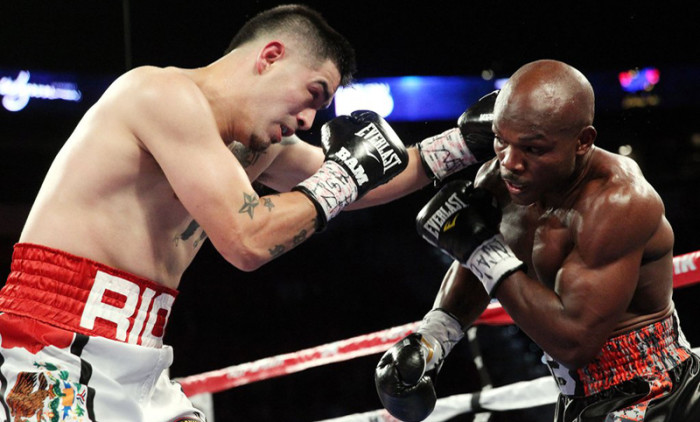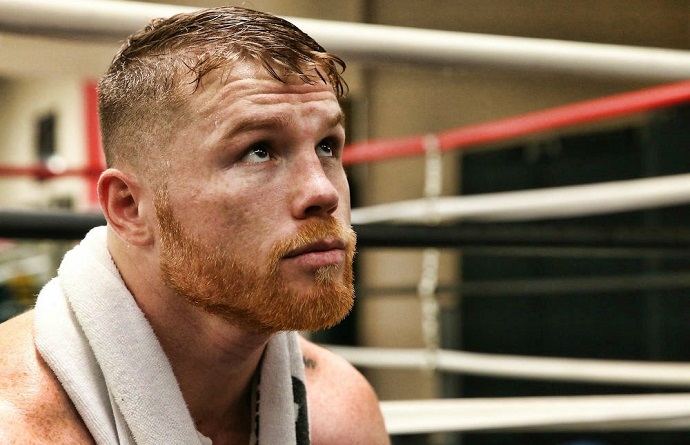The Tragedy of Boxers With CID
Ring rust is real.
Three long years is what John L. Sullivan waited between fights; Jack Dempsey did the same. Neither heavyweight returned from the long, dry spell to recover their ring prowess. Sullivan came back only to fall to James J. Corbett in 1892. Dempsey lost to Gene Tunney in 1926. The point should be obvious: boxers need to box. But sometimes, they don’t. Whether it’s by choice or because of a genuine lack of passion, some fighters just wait forever to get back in the ring. And they often pay the price.

Brandon Rios is a perfect example. The man probably looked the best he had in ages last winter when he dominated a thoroughly unprepared Mike Alvarado in Colorado. Focused, aggressive, and determined, this was the Rios fans had been wanting to see for ages. Then came the long wait. First a fight with Kell Brook fell through. Then, after what seemed like forever, a match was made with Tim Bradley. But in the interval, Rios had let himself go, physically and psychologically. The results were predictable.
For Bradley made Rios look foolish in the ring, as he beat the gritty former champ into submission. While it’s true Rios was not in the same league as Bradley to begin with (especially the new, improved Bradley trained by Teddy Atlas), Rios still looked terrible nonetheless. After the bout, a once feared warrior promptly, and very publicly, retired. C’est la vie.

If only Rios represented a rare condition and the only current example of CID, otherwise known as Chronic Inactivity Disorder. An easily diagnosable yet serious problem which has plagued the sport of boxing for ages, CID has now become so common in the fight game that it’s arguably overcoming ambition as a defining trait among top fighters. Andre Ward, Mikey Garcia, Guillermo Rigondeaux: the list of those who suffer from CID seems to be growing at an alarming rate.
Although CID should not be confused with the even more off-putting CAD (Chronic Avoidance Disorder), experts suggest that industry professionals, fans and analysts alike need to face this rising plague head-on. Sadly, there are fighters out there who simply aren’t going to ply their trade on a regular basis. Their reasoning for these endless layoffs may be legitimate; then again, they may not. No matter. These people just aren’t boxing, which is kind of sad when you consider that doing so is their profession.
Imagine, if you will, a baker who doesn’t bake. Or a banker who doesn’t bank. Or a dancer who…okay, you get the point. It’s worth wondering what these poor souls actually do with their time when they go through these bouts of chronic unemployment. Do they sit at home playing video games? Do they engage in charity work? Do they build model boats?

We just don’t know. And, truth be told, it might be best if we don’t. Trying to figure out how the likes of Ward, Garcia and Rigondeaux whittle away the endless hours might be a maddening pursuit in and of itself. Best, perhaps, if we all just keep active in our own busy lives. Best, perhaps, if we all just offer up a simple prayer of thanks that we actually get to be productive in our own, small ways.
The one bit of good news about CID is that it’s largely treatable, although sometimes the care is expensive and time consuming. Dropping a lawsuit, for instance, can be an enormously frustrating experience. It can, however, effectively battle CID. The same can be said with taking on fights for less than obscene amounts of money. While it might be unfair that those with less talent may be making more money than the CID sufferer, the boxer can at least take comfort in the fact that the symptoms of CID will vanish almost instantaneously.
Sometimes, of course, CID is unavoidable, as when injuries are involved. Yet rare is the time when an injury is the only cause of CID. In most cases, said injury is accompanied by lawsuititis and holdoutformoreitis. Indeed, the aforementioned treatments (lawsuit dumping, fighting for less) sometimes greatly help injured fighters battle CID effectively.

Ultimately, the only way to completely cure CID is with ring activity. A boxer actually has to start boxing again on a regular basis if he ever wishes to leave behind the nightmare which is Chronic Inactivity Disorder. However, it appears that CID impacts the part of the brain which activates BD – Burning Desire. Rarely will one find a CID sufferer genuinely desiring to overcome his ailment and step through the ropes again. While statements intended to indicate BD may be given to the media, these are apt to be said with a shrug or a yawn (a surefire symptom of CID).
As with most chronic disorders, CID affects more than just the people it directly impacts. Fans, families, friends, trainers, managers and promoters can all be harmed by the effects of CID. For fans, there is sometimes only one option: to stop following the boxer in question. This can be heart wrenching, but with discipline, and perhaps some help from a licensed therapist, choosing to stop reading about a hopelessly inactive boxer can prove beneficial to a long-suffering fight fan’s overall well-being.
And it’s worth considering that maybe if enough fans turn away from the boxers with CID and stop rewarding them for long stretches of inactivity, boxers will in turn realize that serious treatment for this ailment is necessary and long overdue. Experts report that those who fully recover from CID and regain their BD have one thing in common: a sudden need to regain ticket sales and start making trips to the bank again. See, boxing fans? You — yes, you — can make a difference in the fight against CID. Let’s all do our part. — Sean Crose






Great article !